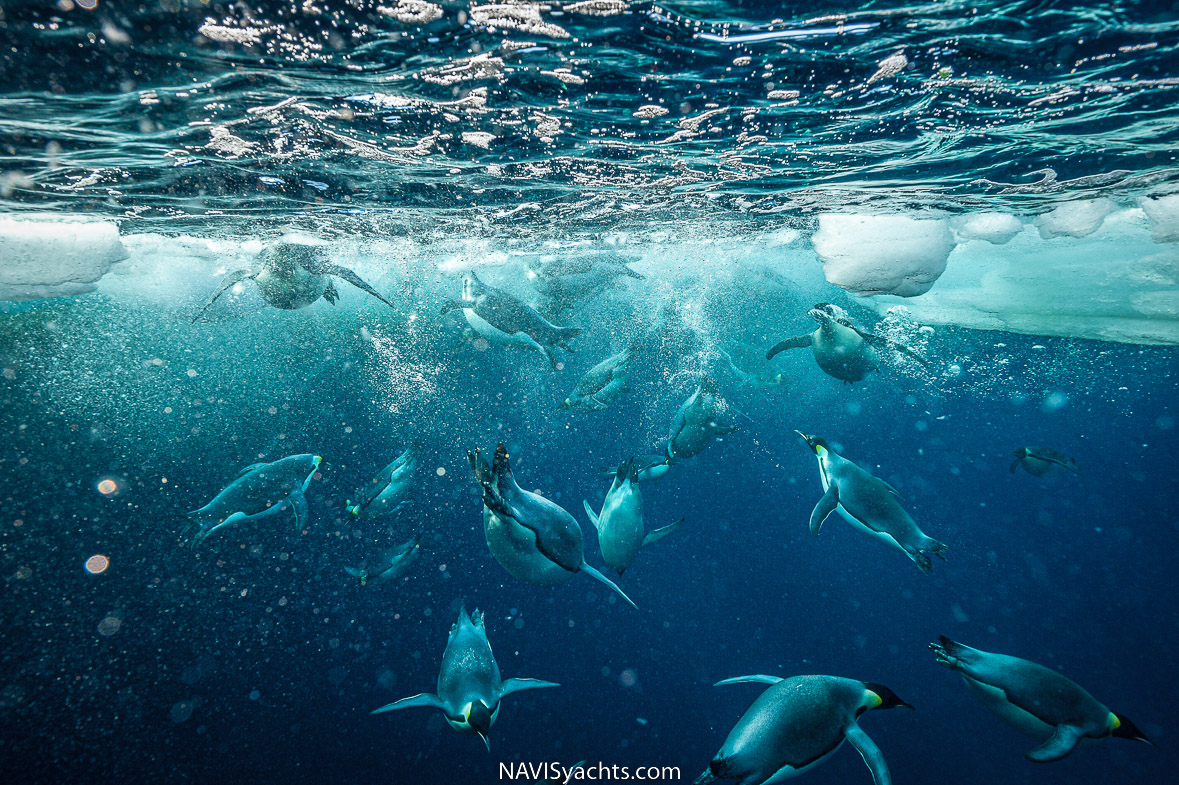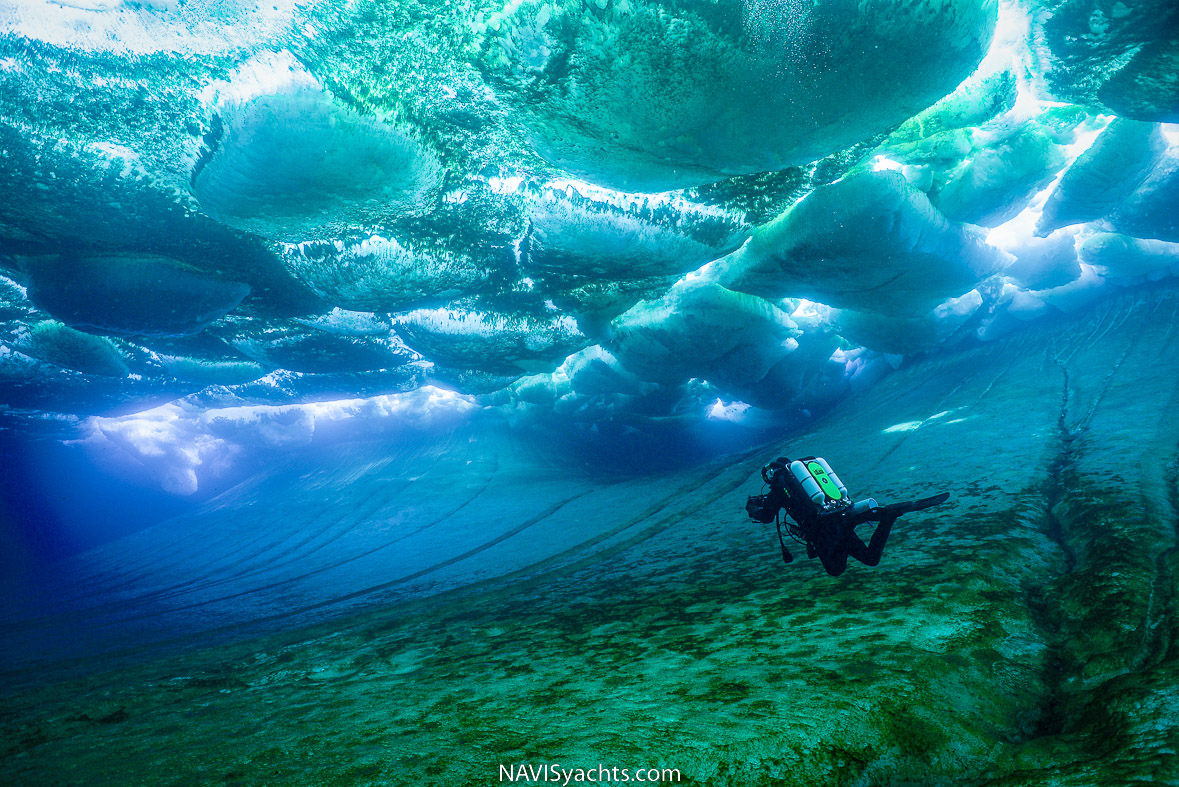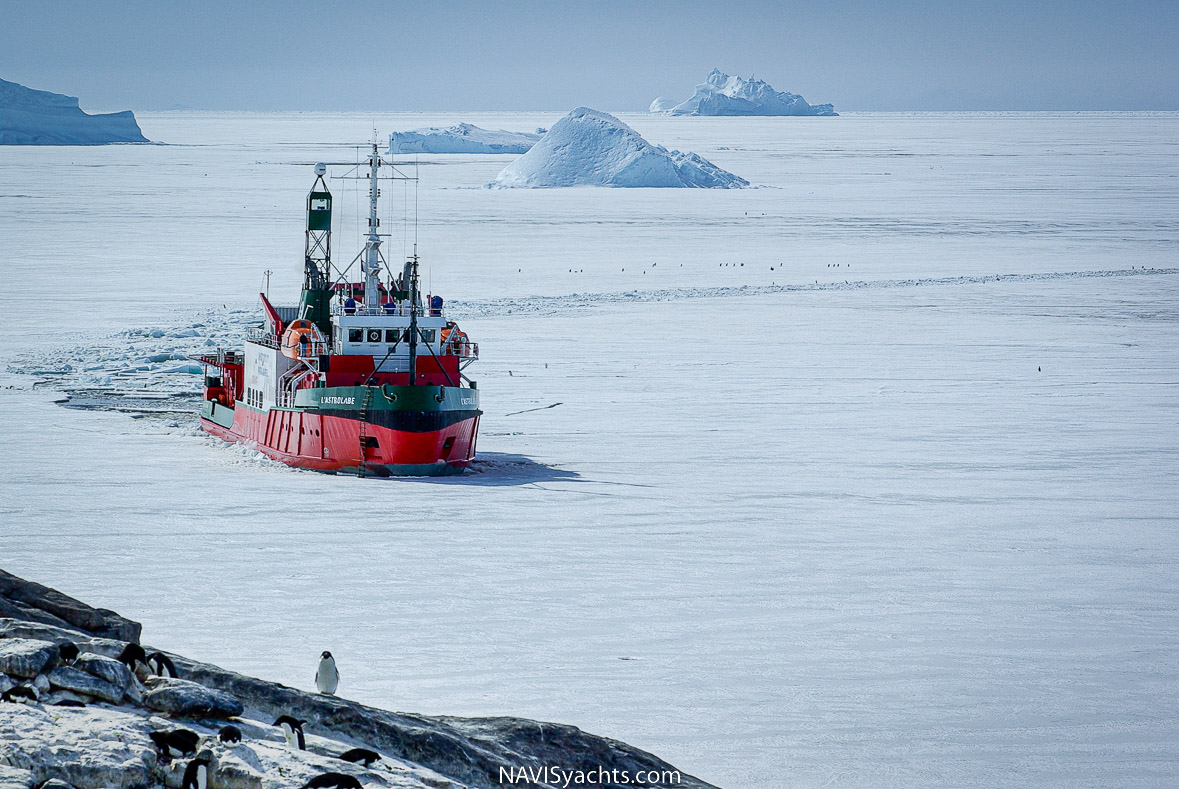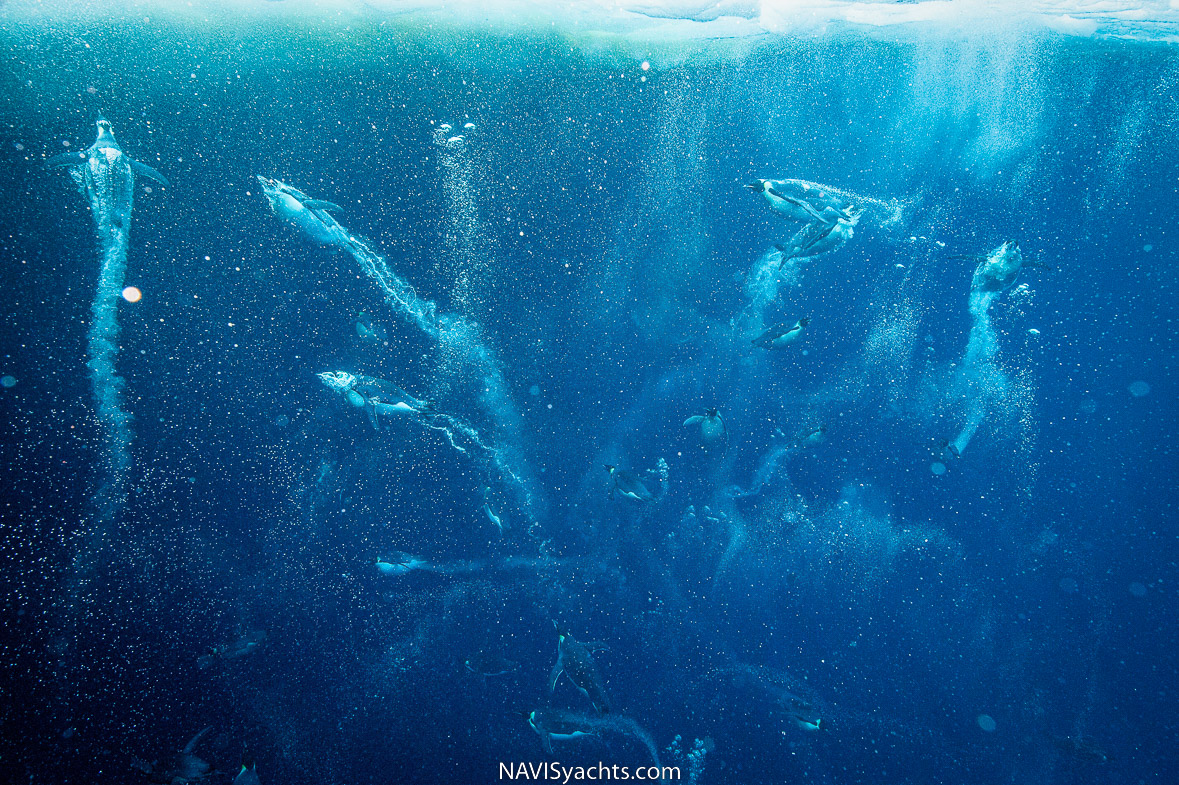An accomplished underwater videographer, Didier Noirot has a noteworthy CV detailing 44 years behind the lens. Didier has worked with Jacques Cousteau, National Geographic, Disney Nature, John Jackson (La Bête du Natal), and Jacques Perrin (Ocean), among others, earning Emmy Awards for the BBC favorite, Blue Planet, and the documentary One Life. Passionate about the ocean and the marine life it supports, Didier dedicates his time and expertise as President and co-founder of the philanthropic ocean education organization, The Balthazar Project.
On October 18, 2006, the Astrolabe, an iconic 72-meter French icebreaker yacht, left the protected Tasmanian port of Hobart. It was a warm spring day in southeastern Australia. The destination for this important transport vessel was the French polar station of Dumont d’Urville in Terre Adélie located on the coastline of the Southern Ocean in Antarctica. Astrolabe carries up to 1,200 tons of cargo with accommodations for 60 personnel, regularly delivering supplies in spring and summer from Tasmania. That year, I embarked with three other companions for a three-month stay on the ice. The 1300-mile journey due south had just begun.

From the second day, I understood why access to Antarctica proved difficult. We had entered the part of the ocean, so dreaded by sailors, called the roaring forties. Waves of more than eight meters hit the starboard side of the Astrolabe, demanding we decrease our speed. The boat rolled edge to edge. The situation worsened when we reached the fortieth parallel, worsening further still as we crossed the fiftieth parallel. Westerly winds often exceeded 100 km/h. Outside, the sea was frothy white. I was amazed by the grace of our only companions in the open sea, albatrosses whose wings brushed the crests of these giant waves, careening ever closer, yet never touching them.
On the fifth day of travel, we crossed the sixty-first parallel. On the deck, the air was frozen. Ice on the sea had flattened the surface of the water. The ship hit the ice floes, one after the other, causing disturbing thuds along the hull. The Astrolabe, however, a sturdy icebreaker, feared nothing.

Approaching from the south, the ice became denser, forcing the boat to a standstill. The ultrathick pack ice no longer crumbled under the reinforced bow of the ship. The satellite photos that arrived on board allowed the captain to look for a possible route through less formidable ice. Only four days later we arrived at Dumont d’Urville as the white continent majestically spread across the horizon before us.
I have never seen anything like it! A huge dome of white ice emerged from the pack ice chunks bumping atop the sea. The clean, icy air held no scent. This world of purity was unreal.

The French polar station, located on the only small island in the region, was home to a colony of Adélie penguins that lived among the pebbles. The Adélie shared the island with a colony of nearly 5,000 Emperor penguins who lived on the ice floe at the foot of the resort.
Our film crew was tasked with creating the underwater shots for a movie. There was no written script, as nature often writes her own, but Weddell penguins and seals were definitely on our cast list.
That morning, we had already covered more than 10 kms on the ice, courtesy of the skidoo. The outside temperature was -18°C. Emperor penguins walked in a straight line to the frigid waters in search of krill, their staple food. This walk can be quite long. Their arduous adventure was perfectly described in the popular film many have seen, The March of the Emperor.

On our way, two black spots punched through the pack ice. Out of nowhere, a pair of Weddell seals, a mother and her cub, launched up from the sea. The pup was laying on the ice, whining and crying.
Humans, not a feared predator of this species, therefore approach them quite easily. We did abandon the skidoo, opting to walk the last hundred meters.
The big eyes of the young seal scrutinized us, wondering who these strange visitors could be. It was important that the first image this pup had of men be the right one. We should not scare him or make sudden movements, and must remain silent. The mother stood upright in her hole, her head protruding from the ice floe while cautiously watching us.

The sea ice was not uniform. Its thickness varied from one place to another. Many cracks divided it, breaking and turning into long faults that opened and closed regularly under the action of the swell. In order to begin the dive for filming, I had to immerse myself in an opening close to the hole in the ice. After a long observation of the movements of the swell, I noticed that I had twelve seconds to cross the meter of ice before it closed on me, with the same short timeline to get out. We would have to move quickly …
Once under the water, I slowly headed toward the hole. The freezing -1.8° temperature of the water immobilized my face. I identified the mother, still in an upright position. Her head was out of the water.

She let herself sink and swam toward me for a closer look. She did not seem afraid. I continued to move forward, my stroke being much less elegant than hers. Directly under the baby it seemed, as I peered through the transparency of the ice, he immersed his head on the surface of the water and looked straight at me with his big, haggard eyes. The mother came closer, sending out a quiet sound, as if encouraging her little one to join her. The young seal slipped into the water and together, they slowly disappeared under the ice. This moment is not only a gift that nature presented to me, but it allowed me to imagine a world where no animal would be afraid of man; a world where man and animal would live in perfect harmony ...
The next day we searched for Emperor penguins. We had seen them the day before heading towards the sea, but today, a group of about twenty individuals headed toward an iceberg frozen in the middle of the ice floe.

These gigantic icebergs, about thirty meters high and blocked by the pack ice, are stranded by 250 to 300 meters, while ninety percent of their mass remains submerged. In spring the sun’s rays continuously illuminate their north face, slowly melting the ice, creating a small pool at the foot of the iceberg which is a boon for penguin access to open water a reasonable distance from their colony.
Like seals, penguins are not afraid of man, but we always respect the same rules of approach regarding silence and the absence of sudden movements. They threw themselves head first into the pristine water which was so clear that I could see them long before they disappeared into the depths of the ocean. Those that rose to the surface released tiny air bubbles trapped in their feathers, increasing their speed to be able to gush out of the water in great leaps.
I marveled once again at the spectacle that nature offered me in a world that once seemed so inhospitable.
I returned ten years later to Dumont d’Urville. The number of Adélie penguins was virtually unchanged, but that of the Emperors had halved. The challenge was that I experienced several consecutive days of rain, very different from my trip in 2006. The planet was warming inexorably.













Photos: Didier Noirot | Words: Didier Noirot



